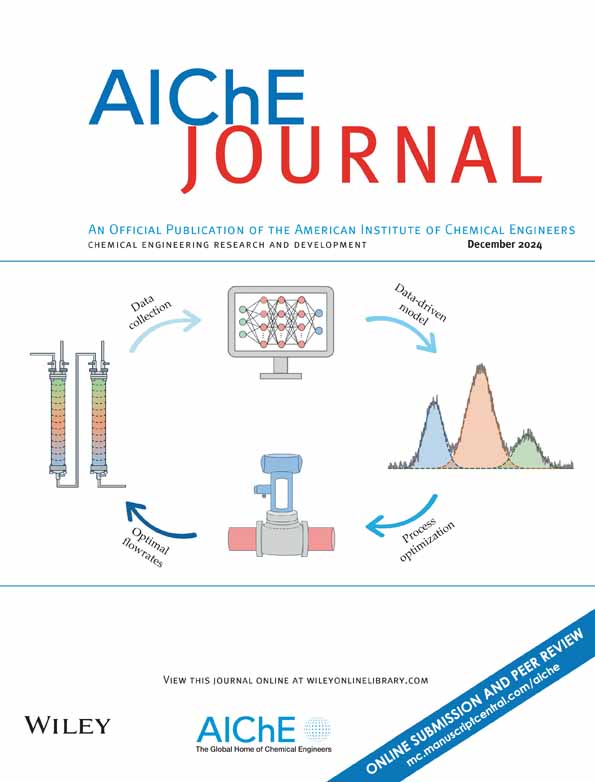Efficient heat integration within discretely heat integrated distillation columns using liquid injection
IF 3.5
3区 工程技术
Q2 ENGINEERING, CHEMICAL
引用次数: 0
Abstract
Electrification of distillation processes through discretely heat integrated distillation columns (D-HIDiC) is an effective approach to enhance energy efficiency and lower carbon emissions. For separating systems with high temperature lift, multi-stage compression and inter-stage cooling are necessary to link the high-pressure rectifier and low-pressure stripper. Traditionally, heat recovery employs pumparound loops, but this study introduces liquid injection as a more efficient and innovative alternative. Simulation results using methanol/water separation indicate that liquid injection reduces both reboiler duty and compression power, achieving up to 50% primary energy savings compared with conventional distillation columns. Unlike continuous heat exchange in conventional HIDiC (C-HIDiC), D-HIDiC simplifies heat integration, avoiding complex hardware and energy penalties. Comparative analysis across multiple configurations, including SuperHIDiC, confirms the potential of D-HIDiC with liquid injection to fully electrify distillation, eliminate steam utility, and significantly support sustainable industrial operations.利用液体注入在离散式热集成蒸馏塔内高效集成热量
通过分离式热集成精馏塔(D-HIDiC)实现蒸馏过程电气化是提高能源效率和降低碳排放的有效途径。对于高温扬程的分离系统,需要多级压缩和段间冷却来连接高压整流器和低压汽提塔。传统上,热回收采用泵循环,但本研究引入了液体注入作为更高效和创新的替代方案。使用甲醇/水分离的模拟结果表明,液体注入降低了再沸器的负荷和压缩功率,与传统精馏塔相比,可节省高达50%的一次能源。与传统HIDiC (C-HIDiC)的连续热交换不同,D-HIDiC简化了热量集成,避免了复杂的硬件和能量损失。包括SuperHIDiC在内的多种配置的对比分析证实了D-HIDiC与液体注入的潜力,可以使蒸馏完全电气化,消除蒸汽的使用,并显著支持可持续的工业运营。
本文章由计算机程序翻译,如有差异,请以英文原文为准。
求助全文
约1分钟内获得全文
求助全文
来源期刊

AIChE Journal
工程技术-工程:化工
CiteScore
7.10
自引率
10.80%
发文量
411
审稿时长
3.6 months
期刊介绍:
The AIChE Journal is the premier research monthly in chemical engineering and related fields. This peer-reviewed and broad-based journal reports on the most important and latest technological advances in core areas of chemical engineering as well as in other relevant engineering disciplines. To keep abreast with the progressive outlook of the profession, the Journal has been expanding the scope of its editorial contents to include such fast developing areas as biotechnology, electrochemical engineering, and environmental engineering.
The AIChE Journal is indeed the global communications vehicle for the world-renowned researchers to exchange top-notch research findings with one another. Subscribing to the AIChE Journal is like having immediate access to nine topical journals in the field.
Articles are categorized according to the following topical areas:
Biomolecular Engineering, Bioengineering, Biochemicals, Biofuels, and Food
Inorganic Materials: Synthesis and Processing
Particle Technology and Fluidization
Process Systems Engineering
Reaction Engineering, Kinetics and Catalysis
Separations: Materials, Devices and Processes
Soft Materials: Synthesis, Processing and Products
Thermodynamics and Molecular-Scale Phenomena
Transport Phenomena and Fluid Mechanics.
 求助内容:
求助内容: 应助结果提醒方式:
应助结果提醒方式:


